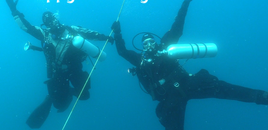Maybe if the courses were not so short and instructors on training dives actually spent time training rather than just diving with the student they would have better skills before getting certified. But then some agencies wouldn't be able to sell that extra Peak Buoyancy performance cert

Long courses are not possible when you pay instructors; it would be too expensive.
I can see only three options:
1 - learn in a club, where instructors don't get paid
2 - learn "how to learn", that is a course in which the instructor gives you honest feedback and tells you how to improve after the course (both in the case of sufficient and not sufficient skills)
3 - learn just what you can during the course, period; then, if you are not satisfied, you pay for another course, and another, and another (read: specialities)
I cannot see other possibilities. It turns out that the current market covers all these options:
- Option 1 is the case of agencies like BSAC, FFESSM, etc.
- Option 2 is the case of "DIR" agencies, but my perception is that this sector is expanding.
- Option 3 the one of mainstream agencies.
However, it seems that the "club culture" is more active in Europe than everywhere else... could you guys confirm?
Also, instructors from mainstream agencies can switch to option 2 if they want, as soon as they satisfy the standard of their own agency.
This wide variety means that, if one wants to achieve excellent trim control, there are not many excuses nowadays






